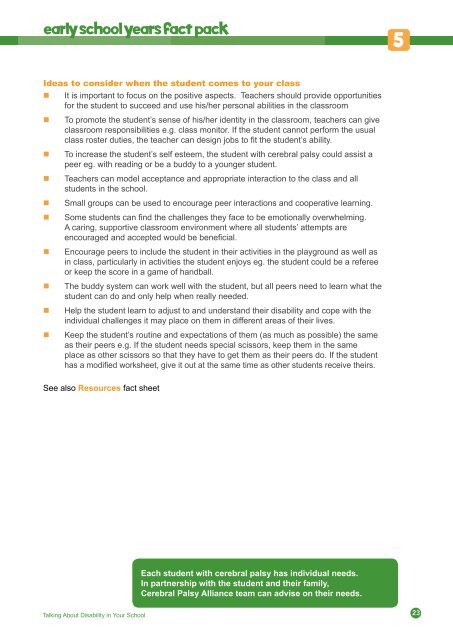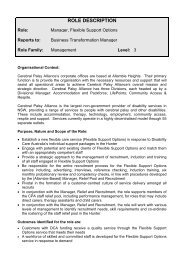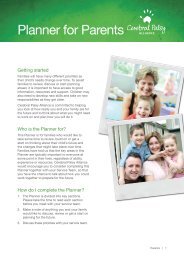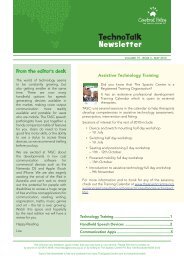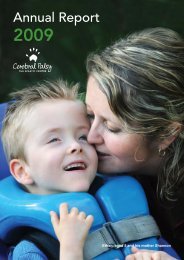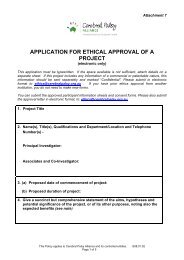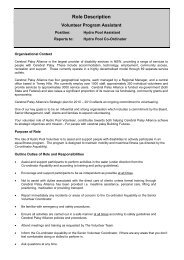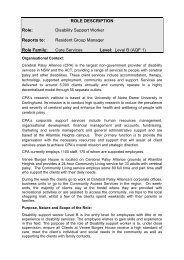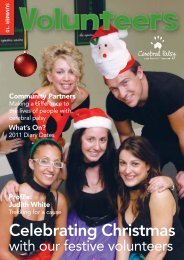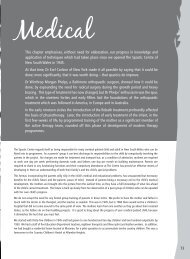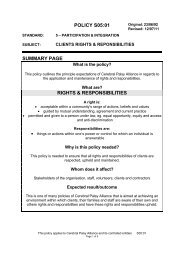Early School Years Fact Pack - Cerebral Palsy Alliance
Early School Years Fact Pack - Cerebral Palsy Alliance
Early School Years Fact Pack - Cerebral Palsy Alliance
You also want an ePaper? Increase the reach of your titles
YUMPU automatically turns print PDFs into web optimized ePapers that Google loves.
early school years fact pack<br />
5<br />
Ideas to consider when the student comes to your class<br />
• It is important to focus on the positive aspects. Teachers should provide opportunities<br />
for the student to succeed and use his/her personal abilities in the classroom<br />
• To promote the student’s sense of his/her identity in the classroom, teachers can give<br />
classroom responsibilities e.g. class monitor. If the student cannot perform the usual<br />
class roster duties, the teacher can design jobs to fit the student’s ability.<br />
• To increase the student’s self esteem, the student with cerebral palsy could assist a<br />
peer eg. with reading or be a buddy to a younger student.<br />
• Teachers can model acceptance and appropriate interaction to the class and all<br />
students in the school.<br />
• Small groups can be used to encourage peer interactions and cooperative learning.<br />
• Some students can find the challenges they face to be emotionally overwhelming.<br />
A caring, supportive classroom environment where all students’ attempts are<br />
encouraged and accepted would be beneficial.<br />
• Encourage peers to include the student in their activities in the playground as well as<br />
in class, particularly in activities the student enjoys eg. the student could be a referee<br />
or keep the score in a game of handball.<br />
• The buddy system can work well with the student, but all peers need to learn what the<br />
student can do and only help when really needed.<br />
• Help the student learn to adjust to and understand their disability and cope with the<br />
individual challenges it may place on them in different areas of their lives.<br />
• Keep the student’s routine and expectations of them (as much as possible) the same<br />
as their peers e.g. If the student needs special scissors, keep them in the same<br />
place as other scissors so that they have to get them as their peers do. If the student<br />
has a modified worksheet, give it out at the same time as other students receive theirs.<br />
See also Resources fact sheet<br />
Each student with cerebral palsy has individual needs.<br />
In partnership with the student and their family,<br />
<strong>Cerebral</strong> <strong>Palsy</strong> <strong>Alliance</strong> team can advise on their needs.<br />
Talking About Disability in Your <strong>School</strong><br />
23


